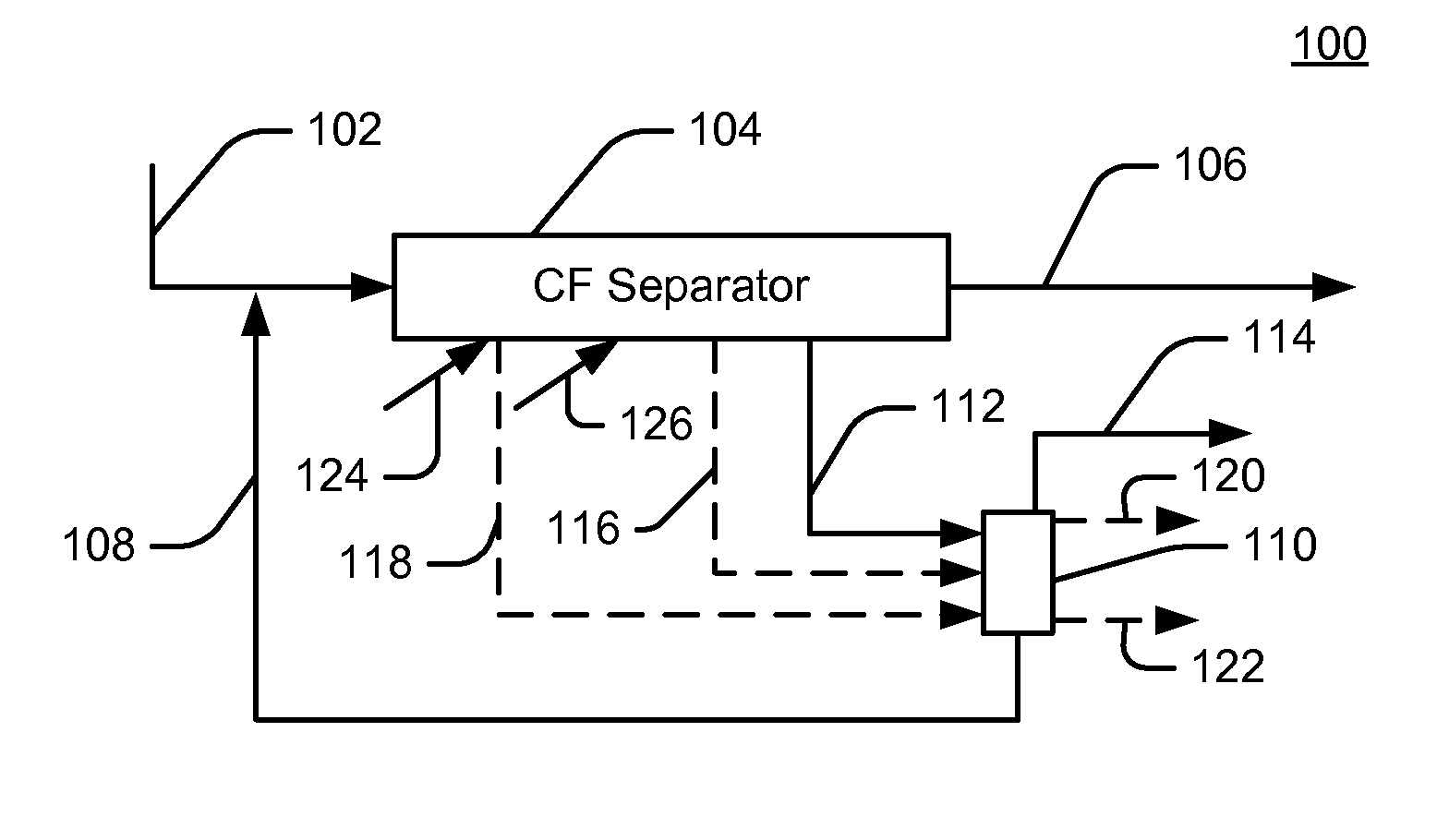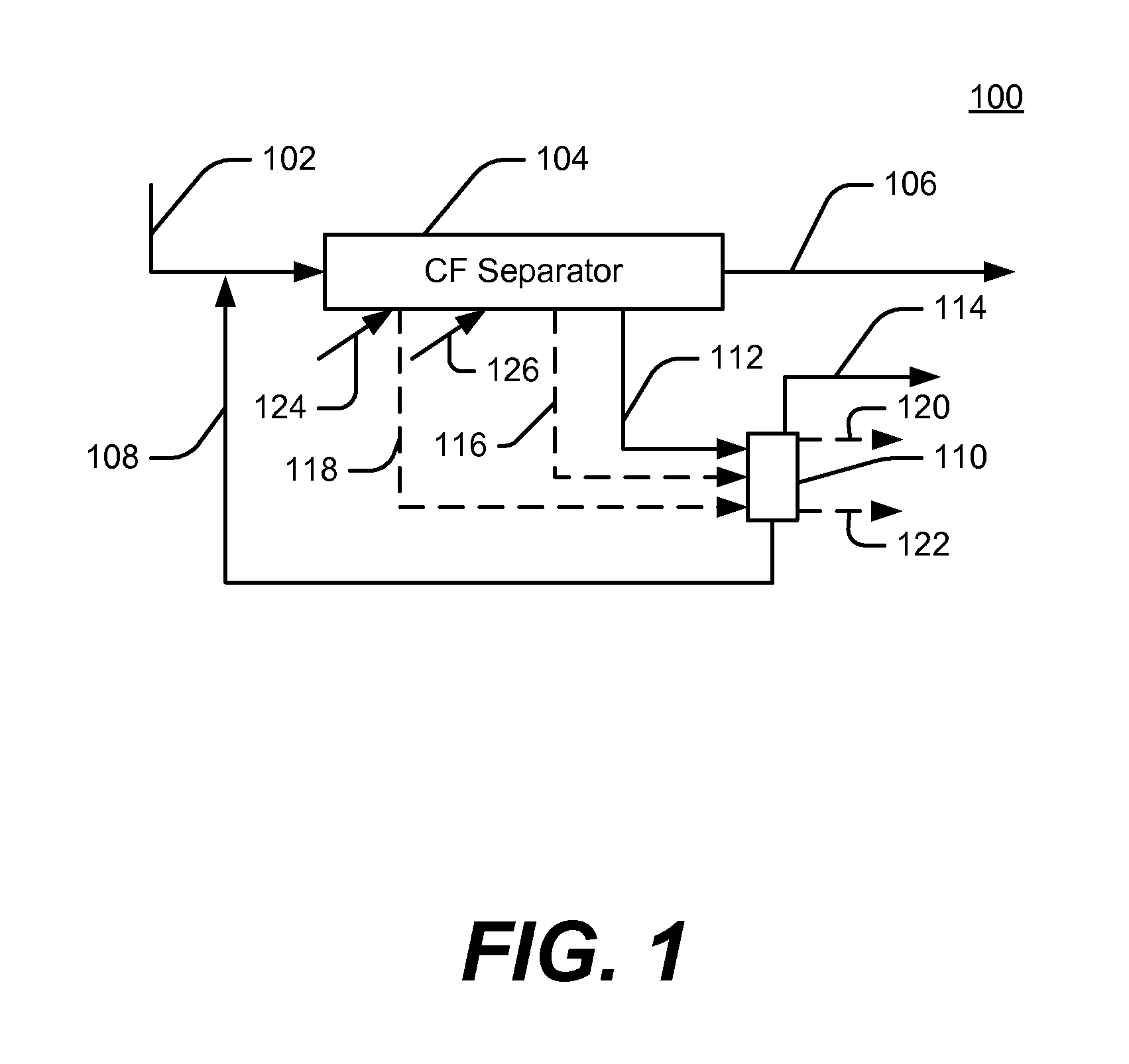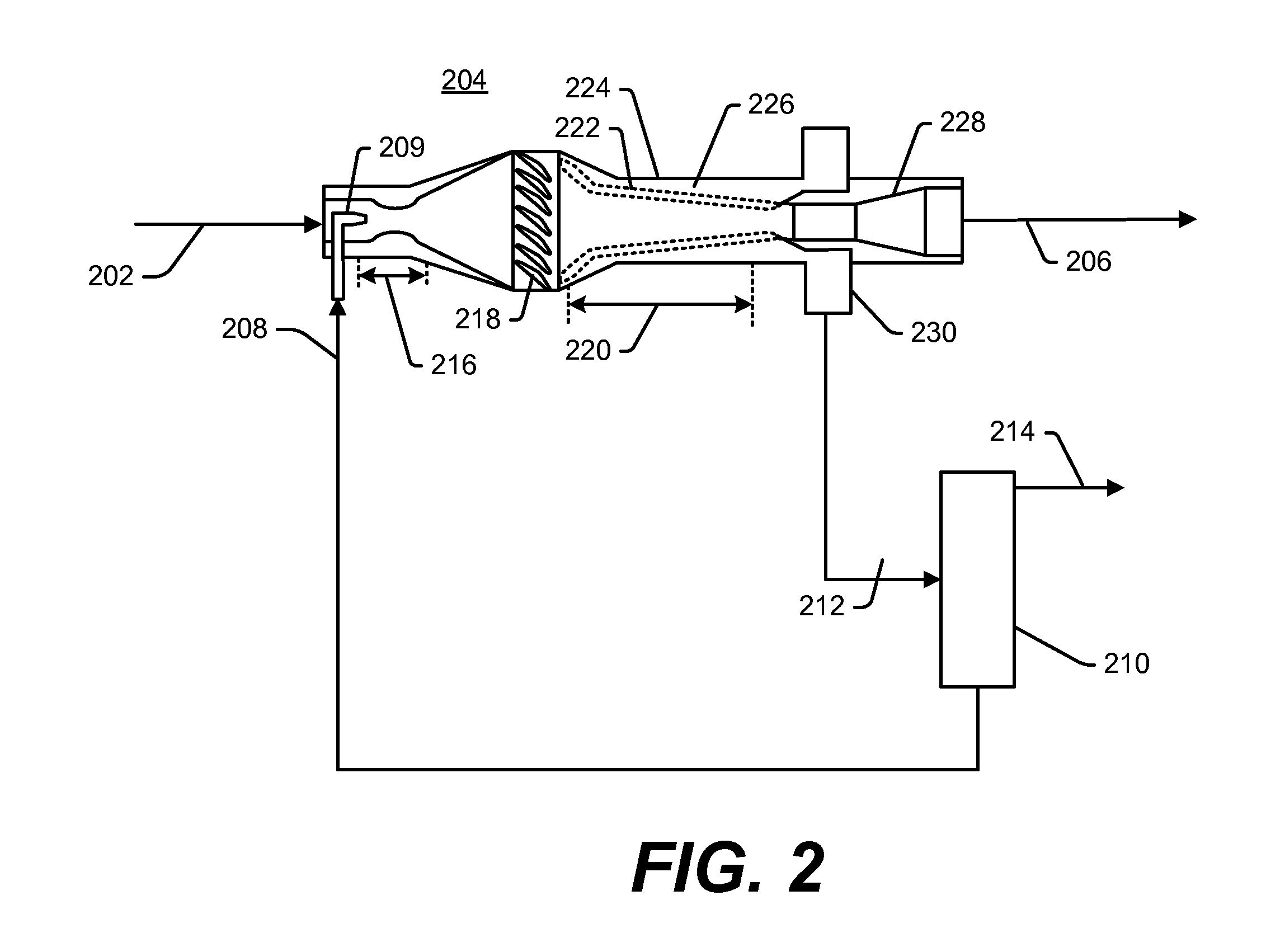Separation of gases produced by combustion
a technology of gaseous mixture and separation method, which is applied in the direction of separation process, liquefaction, lighting and heating apparatus, etc., can solve the problems of large equipment footprint, high energy consumption requirements, solvent/reactant loss during operation, and relatively ineffective methods and devices in separating gas components of gaseous mixtures
- Summary
- Abstract
- Description
- Claims
- Application Information
AI Technical Summary
Benefits of technology
Problems solved by technology
Method used
Image
Examples
specific embodiments
[0102]An embodiment of the process and device is schematically shown in FIG. 4. In this embodiment, the incompressible fluid regeneration device is a centrifugal separation device. In this embodiment, a compressible feed stream 402, which is a combustion gas stream that may be a flue gas stream for example, is first passed through a compressor 404 before being cooled in a heat exchanger 405. The compressible feed stream 402 may be compressed to a pressure ranging from 2 bar (0.2 MPa) to 200 bar (20 MPa). In an embodiment, the compressible feed stream 402 temperature is cooled to near the freezing point of the incompressible fluid selected to separate one or more compressible target components from the compressible feed stream to increase the solubility of the target component(s) in the incompressible fluid stream.
[0103]The compressed and cooled compressible feed stream 408 is fed into the separation device 414. The compressed, cooled compressible feed stream 408 is combined with an ...
PUM
| Property | Measurement | Unit |
|---|---|---|
| temperature | aaaaa | aaaaa |
| pressure | aaaaa | aaaaa |
| exhaust temperature | aaaaa | aaaaa |
Abstract
Description
Claims
Application Information
 Login to View More
Login to View More - R&D
- Intellectual Property
- Life Sciences
- Materials
- Tech Scout
- Unparalleled Data Quality
- Higher Quality Content
- 60% Fewer Hallucinations
Browse by: Latest US Patents, China's latest patents, Technical Efficacy Thesaurus, Application Domain, Technology Topic, Popular Technical Reports.
© 2025 PatSnap. All rights reserved.Legal|Privacy policy|Modern Slavery Act Transparency Statement|Sitemap|About US| Contact US: help@patsnap.com



